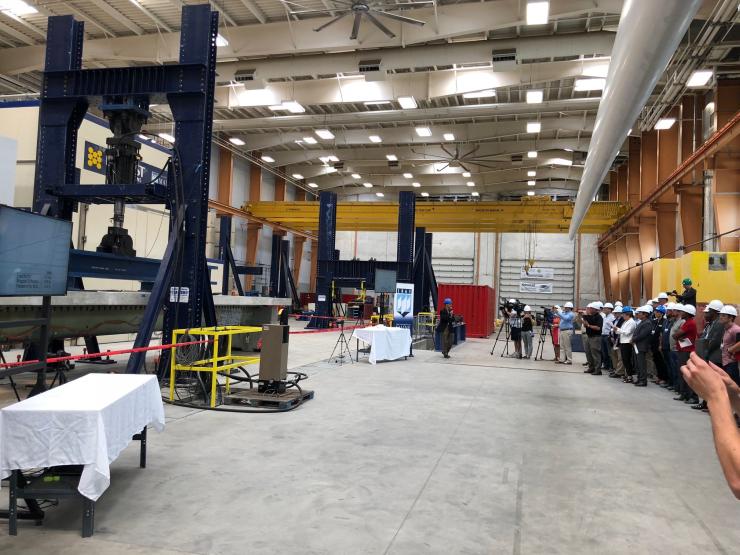The patent-pending system, developed at the UMaine Composites Center, uses composite material girders and precast concrete deck panels to reduce the time and logistics to build a bridge. The lightweight highway bridge superstructure can be built in 72 hours, according to the university.
The Bridge-in-a-Backpack system is licensed to Advanced Infrastructure Technologies (AIT). “As the commercialisation partner of the Center’s composite arch bridge system, today’s event allowed us to showcase this new technology with potential investors as well as DOT partners and executives,” said Brit Svoboda, chairman and CEO of AIT Bridges. “We’re ready to go to market.”
A span was strength-tested in the laboratory last week using computer-controlled hydraulic equipment that simulates the heaviest highway truck loads. The strength-test was conducted for the first time to prove the design modelling predictions and demonstrate the bridge system can withstand the loading specified in the American Association of State Highway & Transportation Officials (AASHTO) Bridge Design Specifications.
The bridge girders are designed to last 100 years and the precast concrete deck is designed to be easily removed and replaced. The university said that the bridge system can be used for highway bridges, pedestrian bridges and military applications. The design is targeted for unsupported spans of about 24m.
“Today’s bridge test exceeded our expectations,” said Dr Habib Dagher, executive director of the UMaine Advanced Structures & Composites Center. “The composite bridge withstood forces equivalent to more than 80 cars stacked on top of each other, and more than 5 times the HL 93 design load specified by AASHTO. The composite bridge girder exceeded twice the collapse strength of steel and concrete girders. Today was truly a remarkable engineering achievement made possible by research sponsored by the US Army Corps of Engineers and the dedication and hard work of University researchers.”

He added that the bridge system takes advantage of the properties of both composite materials and precast concrete, and it is designed with construction logistics in mind. The bridge girders weigh only about 1t to 2t for 12m to 24m spans, so that they can be erected with locally-sourced common rental cranes, making them easy to deploy in most locations.
“The unique girder shape was designed to be nesting and stackable,” added Dagher. “As a result, three to four bridges can be transported on a single flatbed.”




